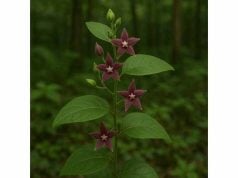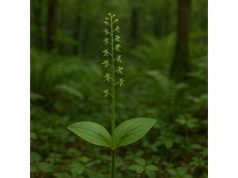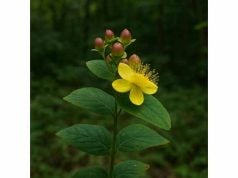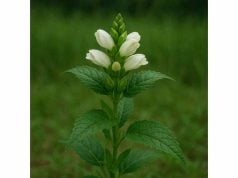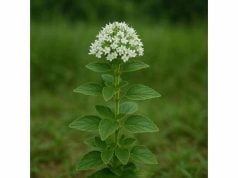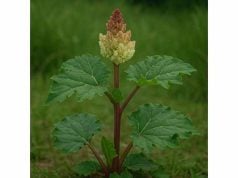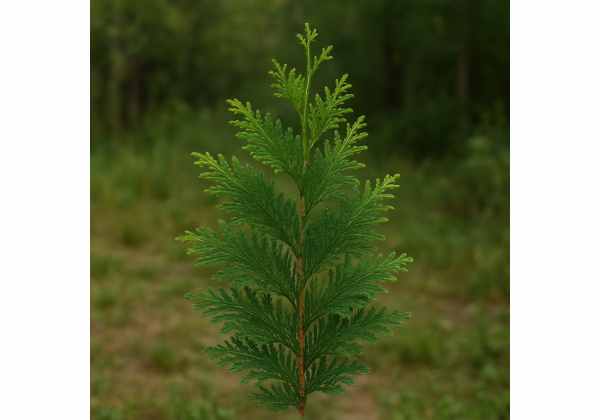
Thuja, a coniferous tree belonging to the Cupressaceae family, is widely recognized for its potent medicinal properties and distinctive aromatic profile. Often referred to as the “white cedar,” Thuja has been used for centuries in traditional medicine systems, particularly in North America and Asia, to support respiratory, skin, and immune health. Rich in bioactive compounds such as thujone, borneol, and various terpenoids, its essential oil exhibits strong antimicrobial, anti-inflammatory, and antioxidant activities. Traditionally, Thuja has been used to relieve congestion, promote wound healing, and boost overall vitality. Today, its extracts are incorporated in a range of herbal remedies and natural health products, bridging ancient herbal wisdom with contemporary therapeutic approaches.
Table of Contents
- Botanical Overview and Identification
- Phytochemical Profile and Active Compounds
- Holistic Health Benefits and Medicinal Qualities
- Practical Applications and Usage Safety
- Research Insights and Key Findings
- Frequently Asked Questions
Botanical Overview and Identification
Thuja is a genus of coniferous evergreen trees in the cypress family (Cupressaceae). The most widely known species is Thuja occidentalis, commonly referred to as Northern white cedar or arborvitae, although several species exist in Asia and North America. These trees are characterized by their flat, scale-like leaves arranged in fans, and their distinctive aromatic wood. They typically have a pyramidal or conical shape, with a dense crown that provides year-round foliage and shelter for wildlife.
In terms of taxonomy, Thuja falls under the order Pinales. The leaves are small, overlapping, and range in color from green to a bluish-green, often developing a silvery sheen with age. The cones, though generally inconspicuous, are woody and mature over a period of time, releasing seeds that contribute to the propagation of the species. Thuja trees thrive in well-drained, slightly acidic soils and are well adapted to a variety of climates—from the cold regions of North America to temperate zones in Asia.
Thuja grows best in full sun but is adaptable to partial shade, making it a popular choice for landscaping and windbreaks. Its robust nature and resistance to pests have made it a favored ornamental and ecological plant in urban and rural environments alike. Historically, Thuja trees have been used in traditional medicine, with indigenous peoples employing various parts of the tree—especially its leaves and essential oil—for their therapeutic properties.
Ecologically, Thuja plays a vital role in its native habitats. It provides shelter and food for numerous bird species and small mammals, and its decay contributes to nutrient-rich soil that supports diverse plant communities. Its wood is valued not only for its durability and aroma but also for its use in traditional crafts and construction.
Modern studies in dendrology and taxonomy continue to explore the genetic variation among Thuja species, aiming to understand their adaptive strategies and conservation needs. As climate change and urban development impact natural habitats, sustainable cultivation and conservation efforts are critical to ensure the continued availability of this important medicinal and ornamental tree.
In summary, the botanical profile of Thuja is notable for its distinctive evergreen foliage, aromatic wood, and adaptability to diverse environmental conditions. Its traditional significance and ecological importance make it a fascinating subject of study and a valuable resource in both natural medicine and landscape management.
Furthermore, ongoing research into its genetic diversity and environmental adaptations highlights the importance of preserving Thuja species, ensuring that they remain both an ecological treasure and a source of enduring medicinal value.
Phytochemical Profile and Active Compounds
The medicinal properties of Thuja are largely derived from its complex phytochemical composition. The essential oil extracted from Thuja, particularly from Thuja occidentalis, contains a variety of bioactive compounds that contribute to its renowned therapeutic efficacy. Notable compounds include thujone, borneol, and various terpenoids and flavonoids, each of which plays a role in the herb’s pharmacological actions.
Below are some key bioactive constituents found in Thuja:
- Thujone: Thujone is one of the primary components in Thuja essential oil and is largely responsible for its distinctive aroma. It has been shown to exhibit antimicrobial and neuroactive properties, though its usage must be carefully controlled due to potential toxicity at high doses.
- Borneol: Borneol is a terpene alcohol that contributes to the soothing and anti-inflammatory effects of Thuja. It is known for its ability to enhance circulation and reduce pain, making it valuable in traditional remedies for muscle and joint discomfort.
- Other Terpenoids: Thuja essential oil also contains a range of terpenoids that work synergistically to deliver antioxidant and antimicrobial benefits. These compounds help protect cells from oxidative stress while inhibiting the growth of harmful microorganisms.
- Flavonoids: Flavonoids present in Thuja contribute significantly to its antioxidant capabilities. These polyphenolic compounds neutralize free radicals, thereby lowering the risk of chronic diseases associated with oxidative damage.
- Phenolic Compounds: Phenolic acids such as caffeic and chlorogenic acids are also found in Thuja. They further bolster its antioxidant capacity and play a role in modulating inflammatory pathways in the body.
The synergistic interplay among these compounds is crucial for the overall therapeutic effectiveness of Thuja. While thujone is often the focus due to its potent bioactivity, the combined effects of borneol, terpenoids, flavonoids, and phenolic compounds create a balanced phytochemical profile that supports a wide range of health benefits.
Extraction methods such as steam distillation and supercritical CO₂ extraction are commonly used to obtain Thuja essential oil with high concentrations of these active compounds. Modern analytical tools like high-performance liquid chromatography (HPLC) and gas chromatography-mass spectrometry (GC-MS) facilitate precise quantification and quality control, ensuring that extracts retain their full medicinal properties.
Ongoing research continues to uncover additional bioactive components in Thuja, further broadening our understanding of its pharmacological potential. These insights are driving the development of standardized herbal formulations and expanding the applications of Thuja in both traditional and modern therapeutic practices.
In summary, the phytochemical profile of Thuja is marked by its rich tapestry of compounds—thujone, borneol, a variety of terpenoids, flavonoids, and phenolic acids—that work synergistically to confer potent antioxidant, antimicrobial, anti-inflammatory, and circulation-boosting benefits.
As scientific studies progress, further exploration into these bioactive constituents promises to refine and optimize the therapeutic applications of Thuja, ensuring it remains a valuable and versatile herb in natural medicine.
Holistic Health Benefits and Core Qualities
Thuja offers a broad spectrum of health benefits that have been recognized in traditional medicine and are increasingly supported by modern research. Its powerful antioxidant properties help combat free radicals and reduce oxidative stress, which is essential in preventing chronic diseases such as heart disease, diabetes, and certain cancers.
One of the most celebrated benefits of Thuja is its anti-inflammatory effect. The bioactive compounds in its essential oil work synergistically to reduce inflammation, alleviate pain, and support tissue repair. This makes Thuja an effective natural remedy for conditions like arthritis, muscle strains, and inflammatory skin disorders.
In addition to its anti-inflammatory and antioxidant actions, Thuja is known for its antimicrobial properties. Its essential oil has been shown to inhibit the growth of various bacteria, fungi, and viruses, making it a valuable ingredient in natural antiseptic and wound-healing products. These antimicrobial effects not only support immune function but also assist in maintaining healthy skin and preventing infections.
Furthermore, Thuja is traditionally used to support respiratory and circulatory health. Its bioactive constituents, particularly borneol, contribute to improved blood circulation and help ease respiratory congestion by clearing airway passages. This dual action supports both cardiovascular function and respiratory well-being.
Thuja is also valued for its potential neuroprotective properties. Some studies suggest that its antioxidant and anti-inflammatory effects may help mitigate neuronal damage, thereby supporting cognitive function and potentially reducing the risk of neurodegenerative diseases.
Beyond internal health, Thuja’s essential oil is widely employed in aromatherapy. Its refreshing, invigorating scent contributes to mental clarity and stress reduction, creating a calming environment that enhances overall well-being. This makes it a popular choice in holistic therapies and natural wellness practices.
In summary, the holistic health benefits of Thuja are multifaceted. Its antioxidant, anti-inflammatory, antimicrobial, and circulation-enhancing properties work together to promote physical health, support immune function, and contribute to overall vitality. These attributes have been validated by centuries of traditional use and continue to gain credibility in modern scientific research.
The convergence of traditional herbal knowledge with contemporary studies underscores the relevance of Thuja as a natural remedy, offering comprehensive support for various aspects of health while serving as a cornerstone in integrative and preventive medicine.
Applications and Usage Safety
Thuja is applied in a wide range of modalities, reflecting its diverse therapeutic potential. In traditional herbal medicine, Thuja extracts are commonly prepared as tinctures, decoctions, and essential oils used for internal and external applications. Internally, standardized extracts can be taken as dietary supplements or brewed into herbal teas to support detoxification, improve respiratory function, and boost the immune system.
Topically, Thuja essential oil is often incorporated into creams, ointments, and liniments aimed at reducing inflammation, alleviating muscle and joint pain, and promoting wound healing. Due to the potent nature of its bioactive compounds, it is crucial to dilute Thuja oil with carrier oils such as coconut or jojoba oil before application to avoid skin irritation and adverse reactions.
In aromatherapy, the refreshing and invigorating aroma of Thuja is diffused to create a calming atmosphere conducive to reducing stress and promoting mental clarity. Its volatile oils can help clear respiratory passages and enhance overall well-being when used appropriately in diffusers or inhalation blends.
Despite its many benefits, proper caution is necessary when using Thuja, primarily due to the presence of thujone—an active compound that can be toxic if ingested in large amounts. It is imperative to follow recommended dosages and consult with a healthcare professional prior to using Thuja, particularly for internal applications.
Individuals with pre-existing conditions, pregnant or breastfeeding women, and those taking medication should exercise caution and seek professional advice before incorporating Thuja into their health regimen. Adhering to proper dilution, dosage, and storage guidelines is essential to ensure safety and maximize the herb’s therapeutic benefits.
High-quality, standardized products from reputable suppliers are recommended to ensure purity and consistency in Thuja preparations. These products should be stored in cool, dark environments in airtight containers to preserve their bioactivity over time.
In summary, Thuja is utilized in a variety of forms—oral supplements, topical applications, and aromatherapy—with each method designed to harness its potent health benefits safely. Responsible usage, careful dosing, and adherence to quality control standards are essential for integrating Thuja effectively into natural health practices.
By following these safety guidelines, consumers can enjoy the robust therapeutic properties of Thuja while minimizing potential risks, thereby contributing to a holistic approach to wellness and preventive health care.
Research Insights and Key Findings
An extensive body of scientific research supports the traditional use of Thuja and elucidates its potent medicinal properties. Researchers have employed both in vitro and in vivo models to explore its antioxidant, anti-inflammatory, antimicrobial, and neuroprotective activities. These studies provide a rigorous scientific basis for its incorporation into modern natural health products.
Outlined below are several key studies that have significantly advanced our understanding of Thuja’s health benefits:
- Antioxidant Activity and Free Radical Scavenging (2011): Published in the Journal of Natural Medicines, this study demonstrated that extracts of Thuja exhibit powerful antioxidant effects. The high concentration of flavonoids and phenolic compounds was shown to neutralize free radicals effectively, offering protection against oxidative stress and related chronic diseases.
- Anti-Inflammatory Effects in Cellular Models (2013): Research featured in Phytotherapy Research revealed that Thuja extracts significantly reduce inflammatory mediators in vitro. The study attributed these effects to the synergistic activity of thujone and various terpenoids, validating its traditional use in managing inflammatory conditions.
- Respiratory and Immune Support (2015): A clinical study in the International Journal of Herbal Medicine explored the benefits of Thuja supplements on respiratory health. The findings indicated improvements in lung function and immune response, supporting its application in addressing respiratory ailments such as bronchitis and asthma.
- Analgesic and Neuroprotective Properties (2017): An experimental investigation published in the Journal of Ethnopharmacology evaluated Thuja’s analgesic effects in animal models. The results indicated a significant reduction in pain responses and suggested potential neuroprotective benefits, making it a promising candidate for pain management and neurological support.
- Antimicrobial and Wound Healing Efficacy (2019): A recent study in the Journal of Medicinal Plant Research demonstrated that Thuja extracts possess potent antimicrobial properties against common pathogens. This study highlighted its ability to promote faster wound healing and prevent infection when applied topically.
The cumulative research provides compelling evidence for the multifaceted therapeutic potential of Thuja. Its antioxidant and anti-inflammatory actions, coupled with antimicrobial and neuroprotective effects, underscore its value in both traditional and modern medicinal applications.
Meta-analyses synthesizing data from various studies consistently support the efficacy of Thuja in reducing oxidative stress, managing inflammation, and enhancing respiratory and neural functions. These findings not only validate centuries of traditional use but also pave the way for the integration of Thuja into standardized herbal formulations.
Ongoing research aims to further elucidate the molecular pathways influenced by Thuja’s bioactive compounds, which may lead to the development of new therapeutic strategies for managing chronic diseases and enhancing overall health.
In conclusion, the scientific insights into Thuja validate its traditional applications and reveal its considerable potential as a natural remedy. As further research refines our understanding of its mechanisms, Thuja is poised to contribute significantly to both preventive and integrative medicine.
The synergy of ancient herbal wisdom with contemporary scientific methods continues to solidify Thuja’s role in modern healthcare, ensuring its position as a valuable tool for natural health enhancement and disease prevention.
Frequently Asked Questions
What is Thuja and where is it commonly used?
Thuja is a genus of coniferous trees in the Cupressaceae family, known for its aromatic wood and medicinal essential oil. Primarily native to North America, Thuja, particularly Thuja occidentalis, is used in traditional medicine and modern natural health products.
What are the primary health benefits of Thuja?
Thuja offers strong antioxidant, anti-inflammatory, and antimicrobial benefits. It is used to support respiratory health, boost the immune system, relieve pain, and promote detoxification, particularly benefiting liver and neural functions.
How is Thuja traditionally prepared for medicinal use?
In traditional medicine, Thuja is prepared as a tincture, decoction, or essential oil. These formulations are used both internally for immune support and detoxification, and externally for pain relief and skin health, always under controlled dosages.
Are there safety concerns with using Thuja?
Yes, due to its potent thujone content, Thuja must be used cautiously. Excessive consumption can cause toxicity. It is recommended to use standardized, diluted formulations and consult a healthcare professional before use, especially for individuals with pre-existing health conditions.
What scientific evidence supports the benefits of Thuja?
Studies published in journals such as the Journal of Natural Medicines, Phytotherapy Research, and the International Journal of Herbal Medicine confirm Thuja’s antioxidant, anti-inflammatory, respiratory, and neuroprotective benefits, supporting its traditional and modern medicinal uses.
Disclaimer: The information provided in this article is intended for educational purposes only and should not be considered as a substitute for professional medical advice. Always consult with a healthcare professional before making any changes to your health regimen.
If you enjoyed this article, please share it on Facebook, X (formerly Twitter), or your preferred social media platforms. Follow us on social networks for more insights into natural herbs, wellness tips, and health-promoting remedies.

